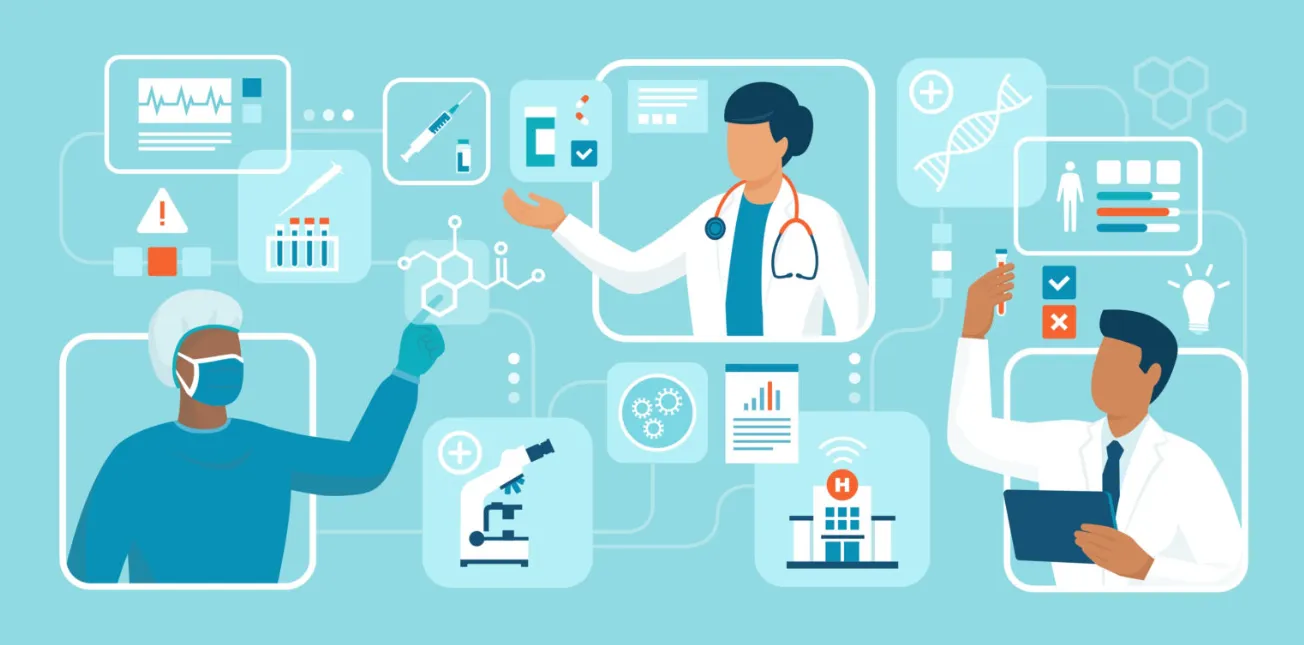In the modern healthcare landscape, the demand for high-quality patient care is accompanied by increasing operational complexity. Providers face the challenge of managing vast amounts of data, coordinating care across multiple departments, and meeting regulatory requirements—all while maintaining efficiency and reducing costs. This is where healthcare workflow automation becomes a transformative solution.
Healthcare workflow automation leverages technology to streamline repetitive and manual tasks, allowing providers to focus more on patient care and less on administrative burdens. This article explores what healthcare workflow automation is, its key benefits, common use cases, implementation strategies, and future trends shaping the healthcare industry.
What Is Healthcare Workflow Automation?
Healthcare workflow automation involves the use of software and technology to automatically execute, manage, and optimize healthcare processes that would otherwise require manual effort. This can include anything from scheduling and patient reminders to clinical documentation, billing, and interdepartmental communication.
Automation aims to reduce errors, accelerate workflows, improve patient engagement, and enhance data accuracy. By automating routine tasks, healthcare providers can increase operational efficiency and deliver a more seamless patient experience.
Why Is Workflow Automation Important in Healthcare?
Healthcare workflows are inherently complex, involving numerous stakeholders including doctors, nurses, administrative staff, patients, insurance companies, and laboratories. Manual processes can be slow, error-prone, and resource-intensive. Workflow automation addresses these challenges by:
- Reducing Administrative Burden: Automates tasks like appointment scheduling, patient check-in, and claims processing, freeing staff for higher-value activities.
- Enhancing Patient Engagement: Automates appointment reminders, follow-ups, and personalized communications to improve adherence and satisfaction.
- Improving Accuracy: Reduces human errors in data entry, billing codes, and patient records.
- Accelerating Revenue Cycle: Speeds up billing and claims submission, improving cash flow.
- Ensuring Compliance: Supports regulatory requirements through audit trails and standardized processes.
Common Use Cases of Healthcare Workflow Automation
1. Appointment Scheduling and Reminders
Automated systems handle patient scheduling, send appointment confirmations and reminders via SMS or email, and enable self-service rescheduling. This reduces no-shows and streamlines front desk operations.
2. Digital Patient Intake and Registration
Patients complete forms electronically before visits, allowing data to be automatically uploaded to Electronic Health Records (EHRs). This speeds up check-in and reduces paperwork.
3. Clinical Documentation Assistance
Automation tools help providers capture clinical notes via templates, voice recognition, or smart forms, improving documentation quality and saving time.
4. Insurance Verification and Authorization
Automated eligibility checks and pre-authorization requests reduce delays in insurance approvals and minimize claim denials.
5. Patient Communication and Follow-Up
Automated workflows deliver personalized health tips, medication reminders, and post-discharge instructions, enhancing patient adherence.
6. Billing and Claims Processing
Automation verifies billing codes, submits claims electronically, tracks payment status, and manages denials, reducing revenue cycle bottlenecks.
7. Reporting and Analytics
Automated data collection and reporting enable real-time monitoring of clinical performance, patient outcomes, and operational metrics.
Benefits of Implementing Healthcare Workflow Automation
Increased Efficiency and Productivity
By automating routine tasks, healthcare staff can focus on direct patient care, resulting in higher productivity and job satisfaction.
Enhanced Patient Experience
Automated reminders and personalized communication keep patients engaged, informed, and prepared for visits, leading to improved satisfaction.
Reduced Errors and Improved Accuracy
Automation minimizes human error in data handling, coding, and billing, improving the quality of care and reducing compliance risks.
Faster Revenue Cycle Management
Automated billing and claims submission accelerate reimbursements, improve cash flow, and reduce administrative costs.
Scalability
Workflow automation allows healthcare organizations to efficiently scale operations as patient volumes grow without proportional increases in staffing.
How to Successfully Implement Healthcare Workflow Automation
1. Map Existing Workflows
Begin by analyzing current processes to identify repetitive, manual tasks suitable for automation. Understand pain points and inefficiencies.
2. Define Clear Objectives
Set specific goals such as reducing no-shows by a certain percentage, decreasing billing errors, or improving patient engagement scores.
3. Choose the Right Technology
Select automation platforms that integrate well with existing EHR, practice management, and communication systems. Consider user-friendliness and scalability.
4. Engage Stakeholders
Involve clinicians, administrative staff, IT, and patients in planning to ensure the automation solution meets real-world needs and gains broad acceptance.
5. Train Staff Thoroughly
Provide comprehensive training and ongoing support to help users adopt new workflows smoothly.
6. Monitor and Optimize
Use performance data and feedback to continuously refine automated processes and address emerging challenges.
Challenges in Healthcare Workflow Automation
- Integration Issues: Legacy systems may not easily integrate with new automation platforms, requiring custom solutions.
- Change Management: Staff resistance or lack of training can hinder adoption.
- Data Security and Privacy: Automation platforms must ensure HIPAA compliance and protect sensitive patient data.
- Cost: Initial investment and ongoing maintenance can be significant, requiring careful ROI analysis.
- Workflow Complexity: Not all processes are easily automated, especially those requiring nuanced human judgment.
Future Trends in Healthcare Workflow Automation
Artificial Intelligence and Machine Learning
AI-powered automation is advancing clinical decision support, predictive analytics, and natural language processing for smarter workflows.
Robotic Process Automation (RPA)
RPA automates repetitive administrative tasks across systems without requiring deep integration, increasing flexibility.
Voice-Activated Documentation
Voice recognition tools help providers document care efficiently, improving accuracy and freeing time for patient interaction.
Patient-Centric Automation
Automation increasingly focuses on personalized patient engagement, delivering targeted education and follow-up care based on individual health profiles.
Cloud-Based Automation Platforms
Cloud solutions enable scalable, accessible automation that can connect disparate systems and locations seamlessly.
Real-World Example: Healthcare Workflow Automation in Action
A multi-specialty healthcare practice implemented workflow automation including appointment reminders, online intake, and automated billing. Results within 12 months included:
- 30% reduction in no-show rates
- 25% increase in billing accuracy
- 20% improvement in patient satisfaction scores
- Reduced administrative hours by 40%, allowing staff to focus on patient care
- This transformation demonstrates the tangible benefits of workflow automation.
Final Thoughts
Healthcare workflow automation is no longer a luxury but a necessity in delivering efficient, high-quality care. By automating routine tasks and streamlining processes, healthcare organizations can enhance patient engagement, reduce errors, improve financial performance, and free clinicians to focus on what matters most—providing excellent patient care.
As technology evolves, embracing automation is key to staying competitive and responsive in a rapidly changing healthcare environment.
External Resource: For further insights on healthcare automation, visit the Healthcare Information and Management Systems Society (HIMSS) Automation Resources.




